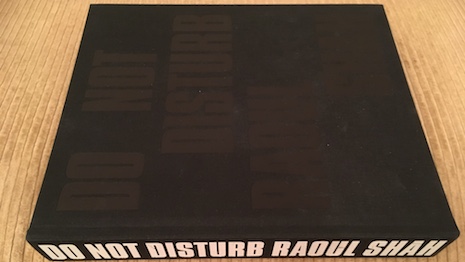 "Do Not Disturb," by Raoul Shah
"Do Not Disturb," by Raoul Shah
Consumers collect all sorts of odds and ends on their travel. But Raoul Shah, founder and joint CEO of creative communications agency Exposure, has spent 39 years on a particular interest: collecting “Do Not Disturb” signs from hotels and resorts he has visited on his travels globally.
The London-based executive has collected more than 500 signs as a hobby. Then, to mark his 50th birthday, he turned the concept into a coffee table book sold in select locations worldwide and targeted to aficionados of branding and design.
“Some do a great job of capturing the spirit of the hotel brand and its personality,” Mr. Shah said. “A few bring the hotel’s design essence right into your hands via their choice of materials.
“However, it’s amazing how many big name, global hotels groups, as well as some very luxurious properties, spend such little time on their branding and design,” he said.
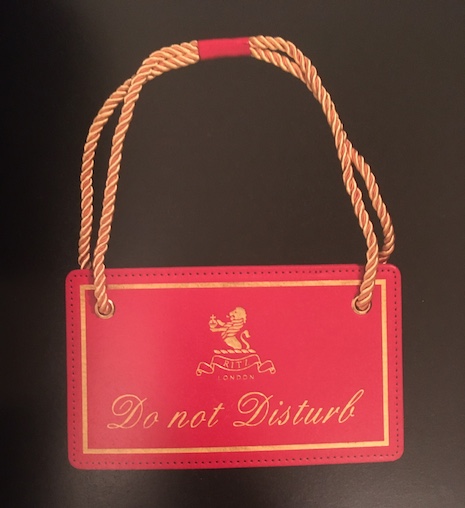 Do Not Disturb door sign from The Ritz Hotel in London
Do Not Disturb door sign from The Ritz Hotel in London
Mr. Shah, who founded Exposure in 1993, in this interview shares how he went about collecting the “Do Not Disturb” signs, how it reflects the sensibilities of various hotel brands, the idea for the $85 book succinctly named “Do Not Disturb,” what some of the contributors had to say and his favorite signs. Please read on:
"Do Not Disturb" is a book off the beaten path. What was the germinating idea behind it?
I’ve been collecting various items – that’s another story – including “Do Not Disturb” signs for many years. This collection was simply a pile of signs gathering dust until recently.
It was in 2017 when I decided I wanted to write a book as one of my 50th birthday milestone moments. And this is what that idea became. Less writing, but more a visual diary of my life, illustrated by these signs that each resonate and tell a different story about people I’ve met and places I’ve been.
Who is the target of the book?
Anyone with a design sensibility, an eye for the language of good graphic design and an interest in travel.
It’s also for those that may be curious to know more about some of those moments in far-flung places, whether solitary or in good company. It makes a great conversation starter.
What is your fascination with do-not-disturb door signs? When did you start collecting and how many do your have?
I started the collection in 1980 when I first visited America with my parents. I probably have over 500 now.
There was no intention to start a collection back then. It just became an idea to have a souvenir from my first U.S. visit when I collected 12 from various hotels.
It then just stuck and became a mandatory part of my checkout routine. I never leave without one.
I find them fascinating in terms of what a simple card can do to give you control and provide an escape from the outside world. They are an interesting analog device in a digital world where our privacy has become such a huge subject of debate.
How did you decide the layout design and copy of the book? And the print run? Is it available for sale?
I worked with the incredible designers at Pentagram, the world’s largest independent design agency, where a close friend works.
It was a privilege to have their eyes and ideas available to help shape the book’s overall design, layout and flow.
I printed 1,000 [copies] and, since it was self-published, I was under no pressure to sell them.
However, I have had the book sold at Dover Street Market London and Los Angeles as well as online, The Laslett Hotel in Notting Hill, Noah NYC, and it is now also available in London at Kiosk from February.
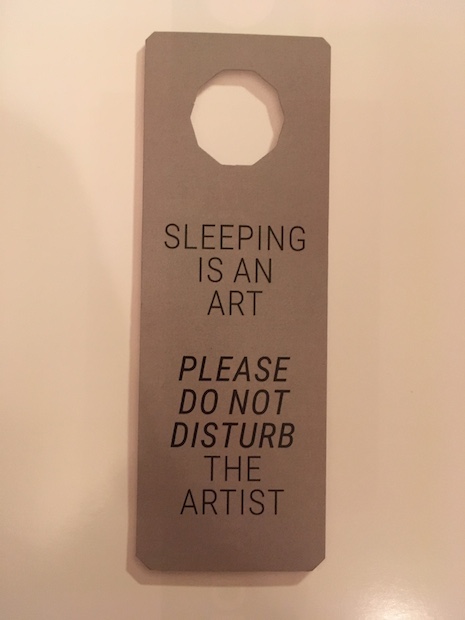 Do Not Disturb from F**K Art Let's Dance
Do Not Disturb from F**K Art Let's Dance
What about the contributors – how did you choose them?
People always ask me about my network of friends and connections around the world. They come from such diverse backgrounds and work in a multitude of sectors ranging from fashion, design, music, art and entertainment, so it seemed only correct to invite a few into the project and share an insight into their own “Do Not Disturb” story.
I also felt the contributors give the book a more diverse narrative, beyond just my own.
I wrote to about 60 friends and asked them to contribute a sign and a story related to their sign. Some did it in a matter of days. Others went as far as creating their own signs. Those that replied are in the book.
The do-not-disturb samples featured in the book are a study in typeface design and also indicate the hipness or brand messaging of the property. Would you agree?
Some do a great job of capturing the spirit of the hotel brand and its personality. A few bring the hotel’s design essence right into your hands via their choice of materials.
However, it’s amazing how many big name, global hotels groups, as well as some very luxurious properties, spend such little time on their branding and design.
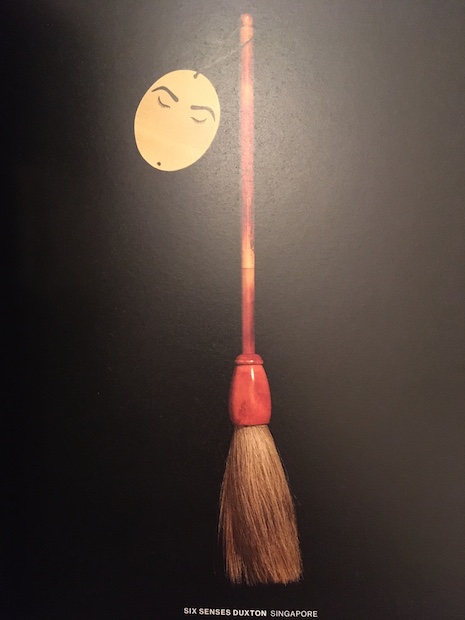 Do Not Disturb door hanger from the Six Senses Duxton hotel on Singapore
Do Not Disturb door hanger from the Six Senses Duxton hotel on Singapore
What differences have you noticed with do-not-disturb signs by property, hotel brand and region?
The Japanese are very functional and most hotels have now gone electronic, so no signs for me.
The American groups have gone from bulk buying signs from a central supplier in the ‘80s to being more bespoke, playful and cheeky with their messages.
The luxury hotels have mostly opted for luxurious materials and very beautiful finishes like The Savoy in London.
Most beach resorts source signs from local artisans using local materials to create their signs.
The most beautiful by a long stretch come from Aman.
Small luxury boutique hotels tend to focus on design and craft, and often opt for color, not type, to distinguish between the two sides of a sign, or simply have two different signs.
The Hoxton and Soho House do great ones.
Properties like The Greenwich NYC, Chateau Marmont and The Bowery are also personal favorites.
The Mandarin Oriental could up their game a little.
Do you have three favorite do-not-disturb signs?
Page 248 is dedicated to my mother who passed away in 2000.
We had an incredible trip to Bordeaux back in the early ‘90s when I lived there. There’s a beautiful memory behind that sign.
Page 196 is a nod to Converse, Exposure’s first-ever client when I launched the agency in 1993.
Exposure and our incredible clients have given me so many opportunities to travel, explore, learn and meet some of the most inspiring people in the world.
Page 88 from Lafayette House, my New York home from home. I love this place and every moment there has been a testament to why I still love traveling and, occasionally, not being disturbed.
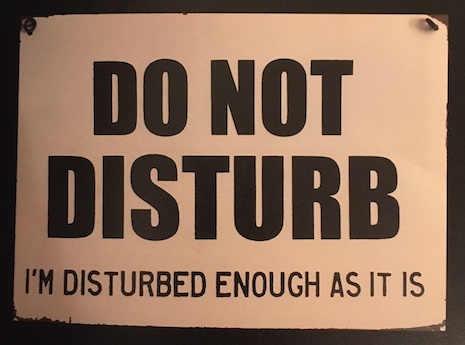 Do Not Disturb sign from Muay Thai instructor Pat Le Hoang
Do Not Disturb sign from Muay Thai instructor Pat Le Hoang
How long do housekeepers typically honor do-not-disturb signs hung on doors?
So far, no one ever come in when the sign is on the door.
However, I have had a polite call from reception asking when I may be planning to vacate the room.
The quickest I’ve showered, changed, packed and left is probably under 10 minutes!
Is a do-not-disturb sign relevant in a day when the hotel's interaction with clients is via digital and apps?
It’s even more relevant today than ever. It’s a branding idea. A touch-point. A return to interacting with people. It can be funny and provide a little more personality to the property. And it’s always good to wonder what’s happening behind that door.